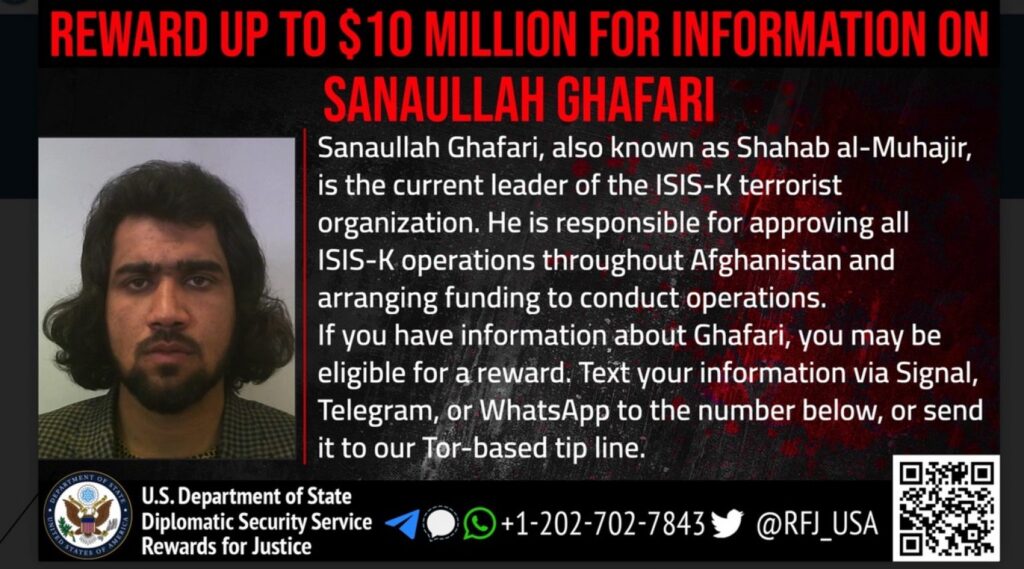U.S. offers $10 million reward for leader of Islamic State Khorasan Province

The U.S. State Department’s Rewards for Justice Program has offered a new $10 million bounty for information leading to the arrest and prosecution of the leader of the Islamic State Khorasan Province.
Sanaullah Ghafar, the emir of the Islamic State Khorasan Province who is also known as Shahab al-Muhajir, is described by Rewards for Justice as “an experienced military leader and one of ISIS-K’s [Islamic State Khorasan Province or ISKP] ‘urban lions’ in Kabul who has been involved in guerrilla operations and the planning of suicide and complex attacks.”
Ghafar is an Afghan native who “is responsible for approving all ISIS-K operations throughout Afghanistan and arranging funding to conduct operations.” He was named the leader of ISKP in June 2020 after the group’s previous emir, Aslam Farooqi, was captured by Afghan forces that April. Farooqi was freed from prison after the Taliban took over Afghanistan on Aug. 15, 2021. He was killed in a shootout in Jan. 2022.
In a June 2021 report by the United Nations Security Council Analytical Support and Sanctions Monitoring Team, Ghafar was identified as “an ambitious new leader.” That report also noted that ISKP and Ghafar maintain “Member States have varying assessments of the extent of ISIL-K and al-Muhajir’s links with the Haqqani Network,” the Taliban subgroup with close ties to Al Qaeda and the Pakistani military and intelligence establishment.
The United Nations added Ghafar to its official Sanctions List in Dec. 2021.
ISKP is the leading opposition to the Taliban’s controlling Islamic Emirate of Afghanistan and its Al Qaeda-organized allies. The National Resistance Front, which is made of of former members of the now defunct Afghan government and the Northern Alliance, are attempting to organize resistance but its capabilities are limited.
That means ISKP has mostly been limited to conducting guerrilla and terror operations, including suicide attacks, against the Taliban. In the first several months after the Taliban takeover of Afghanistan, ISKP launched at least one high profile suicide attack and several ambushes a week.
However, after the Taliban consolidated control of Kabul and the provincial centers, they launched an offensive to counter the ISKP and the latter’s attacks have reduced significantly. The Taliban claims that 500 members of ISKP who were based in Nangarhar have surrendered over the past five months.
While ISKP remains a dangerous group, the threat it poses to Afghanistan and the international community is far less than the one posed by Al Qaeda and its Taliban allies. The Taliban currently controls all of Afghanistan’s provinces, and provides safe haven for Al Qaeda and a host of regional and international terror groups.
Sirajuddin Haqqani, the leader of the Haqqani Network and the Taliban’s Interior Minister, has been identified by the United Nations as an “Al Qaeda leader.” ISKP has been forced underground by the Taliban, and is focused primarily on survival and local attacks against the Taliban.
The Taliban also holds significant advantages against ISKP in all key areas, save one. The Taliban has state sponsors, terrorist allies, regional support, a marked superiority in weapons and numbers, and controls all of Afghanistan. ISKP can only match the Taliban in one area and that the will to fight and persevere. [See LWJ report, In fight against Islamic State, the Taliban holds major advantage.]
